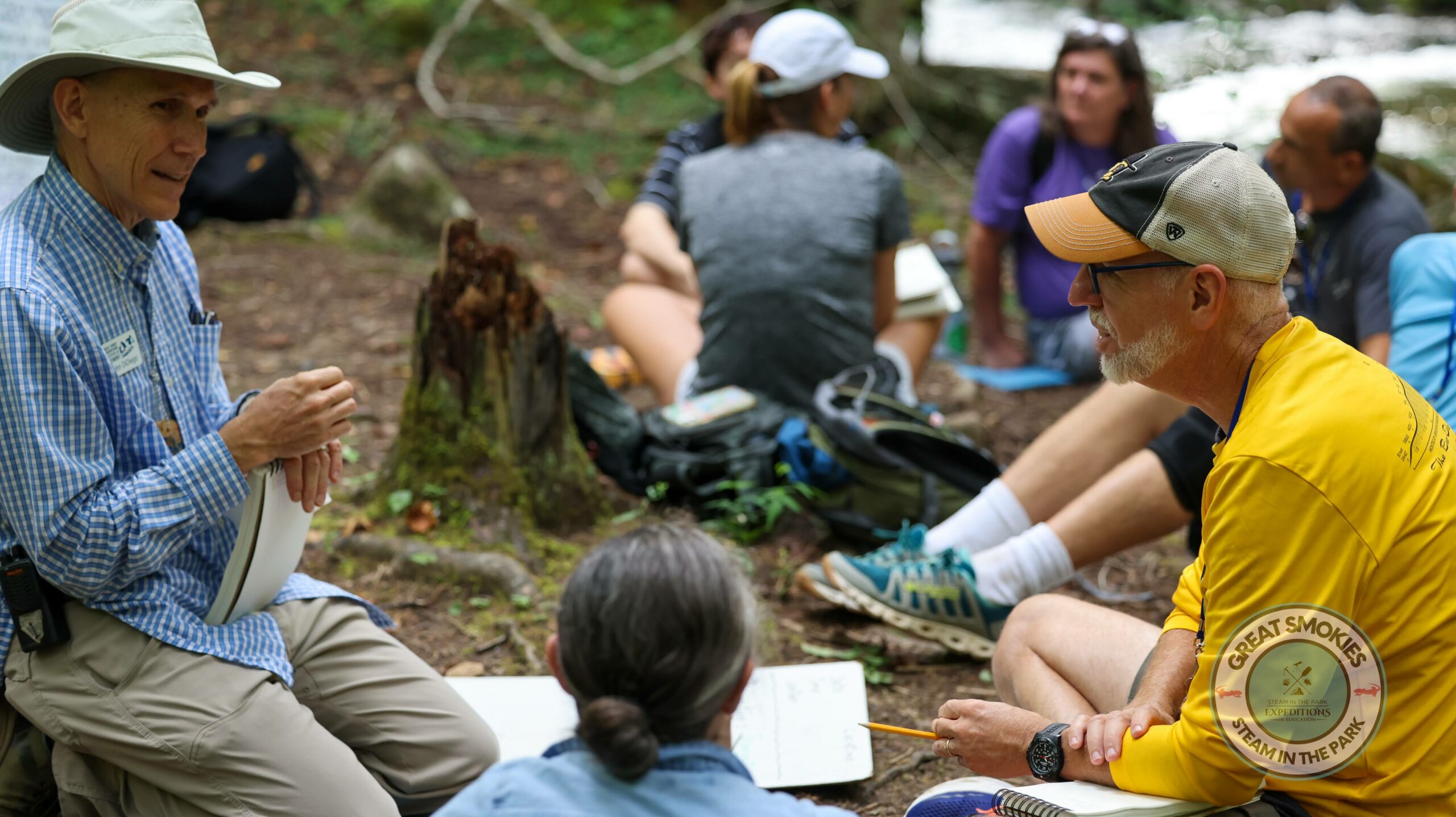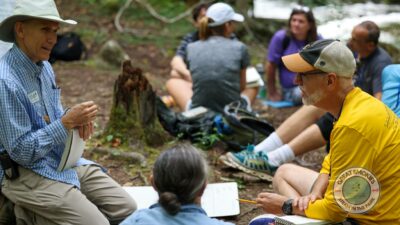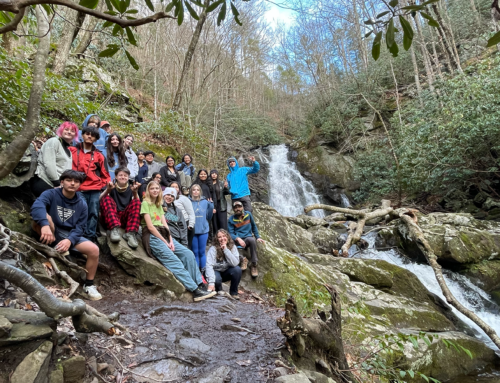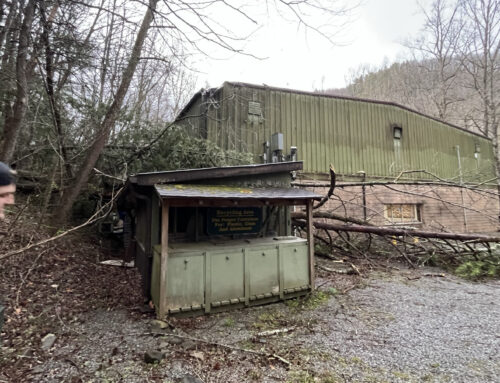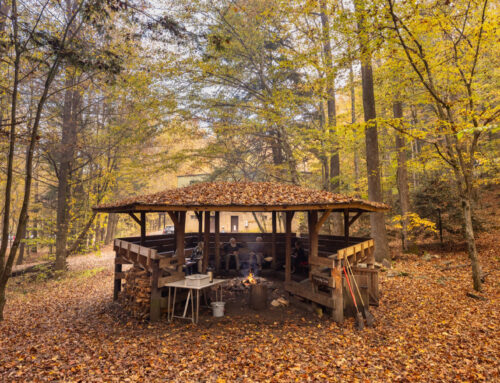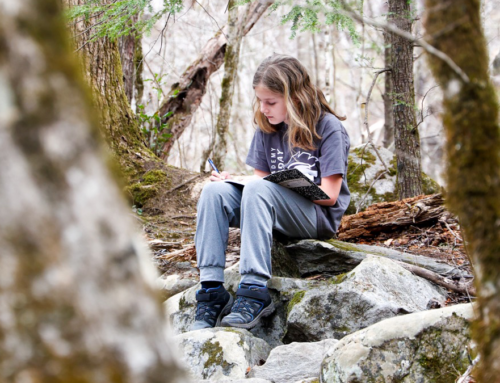Written by John DiDeigo, Educator Director at Tremont
The richness of the Tremont experience stems from the fact that nature is complex and wonderful- and that we are a part of nature. Energy flows through natural systems, powering growth and an ever-evolving array of beauty and life. Matter moves through nature in cycles. Most students who come to Tremont have heard of the water cycle – water changes from liquid to gas, enabling growth, affecting weather, and a host of other important functions. In these ways, nature models productivity, efficiency, beauty, and sustainability.
We aim to mimic nature as we shape each Tremont experience of living and learning together, so that our programs, like nature, are regenerative, spreading joy and new life. How do we do that?
We engage in activities that energize and generate curiosity. We expect to be inspired and to grow alongside our participants. We expect our end result to feed new growth and lay the groundwork for the next thing. When we see students begin spontaneously generating questions and making follow-up observations, we know we have ignited a spark. With the energy level mounting, teaching and learning have hit the sweet spot – “inquiry fever.” We are on the right track.
STEAM-Powered Summer
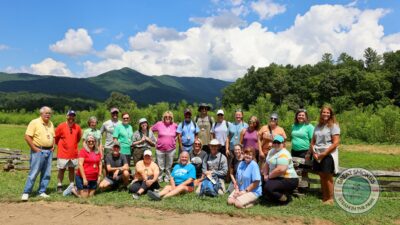 This summer, we partnered with Expeditions in Education founder Dacia Jones to co-create Smokies STEAM in the Park. This was one of 10 weeks of teacher programs Dacia led in different national parks this summer to promote science, technology, engineering, arts and math (STEAM) education in an outdoor environment. Twenty-three teachers from across the eastern US came together at Tremont to live, learn, grow and create together, during the week of Aug 15-19. The week at Tremont was the final program of the 2022 summer season, embodying all of the richness and generative capacity described above. It was a week of inspiration, discovery, and creativity.
This summer, we partnered with Expeditions in Education founder Dacia Jones to co-create Smokies STEAM in the Park. This was one of 10 weeks of teacher programs Dacia led in different national parks this summer to promote science, technology, engineering, arts and math (STEAM) education in an outdoor environment. Twenty-three teachers from across the eastern US came together at Tremont to live, learn, grow and create together, during the week of Aug 15-19. The week at Tremont was the final program of the 2022 summer season, embodying all of the richness and generative capacity described above. It was a week of inspiration, discovery, and creativity.
We designed the week to address United Nations Sustainability Goal #4, Quality Education: “Ensure inclusive and equitable quality education and promote lifelong learning opportunities for all.”Toward this end, we modeled teaching strategies that highlighted social and emotional learning in that natural environment of the national park. We explored life in the stream, investigated salamanders in their habitat, and visited historical sites in Cades Cove. We incorporated music, art, science, and literature in a rich tapestry of shared experiences. From this common ground, teachers then began to create! They built lesson plans, recorded videos, and co-wrote songs that speak to the wonders of this place as well as the magic of spending this time together.
As I think back on the week, I am amazed at the closeness and camaraderie among the teachers, Dacia (and her husband and co-collaborator Steve), and the Tremont faculty. This sense of community and common purpose led the group to consider how they might share the benefits of this week with other educators who could not take part.
In the plant world, the end result of the growth and flowering process is a seed, often encased in a fruit. Thus, the end of the yearly cycle is also the beginning of the next generation, retaining useful characteristics from the parent plants, but also recombining to create something new. The STEAM participants’ fruits are still being produced, but they include lesson plans, educational videos, as well as other writings inspired by our week together. These fruits are full of seeds that will germinate every time they or another educator uses them with students.
The natural world has all sorts of mechanisms for distributing seeds, from winged samaras that fly to new locations on the wind and velcro seeds that hitchhike on clothes or fur, to the seeds consumed in the fruits and ‘deposited’ in the soil later by animals. Our fruits will be distributed as the teachers return to their schools and use the lessons and other learning strategies. They will also be distributed through our Schoolyard Network in the form of training and shared resources. In this way, teachers who weren’t a part of the STEAM program will get a packet of educational seeds that they can use in their classrooms and schoolyards, growing new understandings and insights of their own.
As a teacher from Georgia said, “I feel that I’ll be able to come away from this [week] rejuvenated and recharged with a new zest for the natural world and science, and then hopefully be able to take some of the techniques and tools that were shown to me here…and use them at my school”
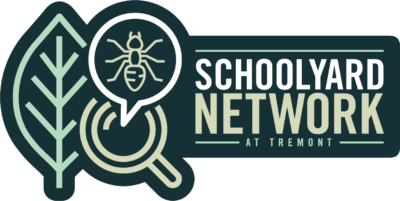 Interested in more educator content like this? Tap into a network of teachers and local resource providers during friendly, informal monthly professional development and sharing sessions. The Schoolyard Network will provide ideas and encouragement for you to take back to your classroom, focusing on better teaching and learning using the environment as an integrating concept. There is no cost to participate.
Interested in more educator content like this? Tap into a network of teachers and local resource providers during friendly, informal monthly professional development and sharing sessions. The Schoolyard Network will provide ideas and encouragement for you to take back to your classroom, focusing on better teaching and learning using the environment as an integrating concept. There is no cost to participate.


